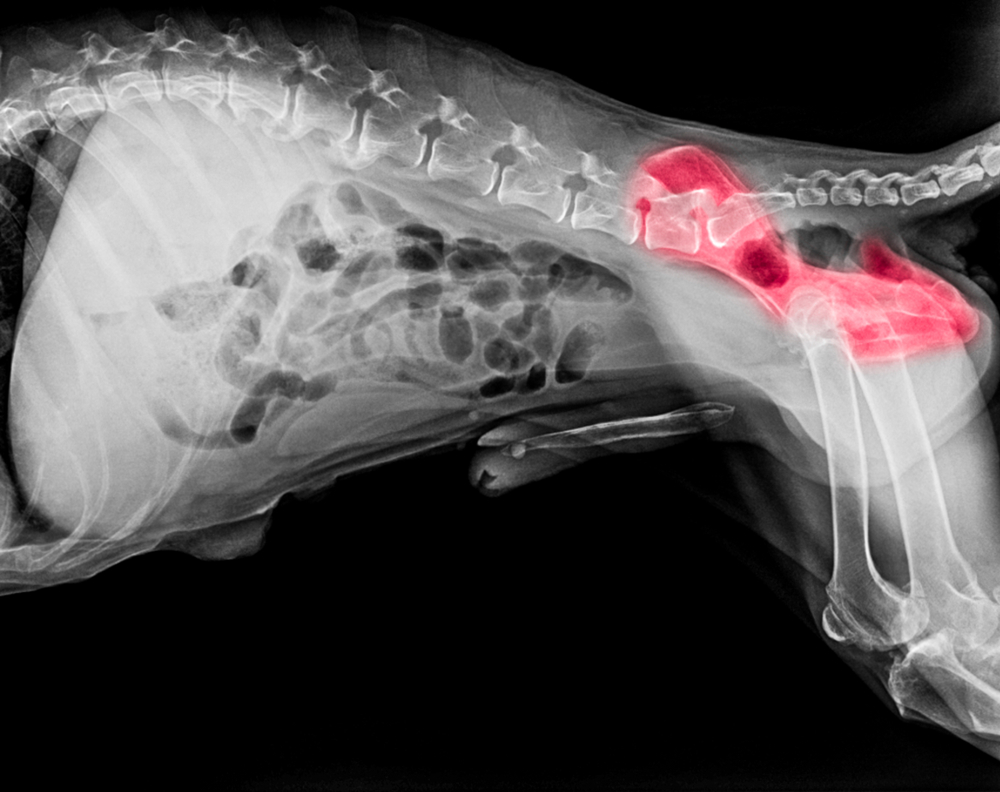Most pet owners have heard of hip dysplasia, especially those who have shared their homes with large-breed pups. Hip dysplasia can affect any dog, but occurs more frequently in purebreds, since the condition is genetically inherited. Over time, this joint deformity leads to arthritis and pain, and impacts younger dogs more severely. The Greenfield Veterinary Clinic team shares the details of hip dysplasia, how your pet could be impacted, and the most commonly used treatment options.
What is dog hip dysplasia?
Hip dysplasia is a malformation of the hip joint that affected dogs are born with and that worsens during a puppy’s growth. The hip is a ball and socket joint, with the “ball” on the end of the femur sitting in the “socket” on the pelvis. In dogs with hip dysplasia, the socket is shallow and the ball is flattened or misshapen, which leads to abnormal motion and wear.
This condition most often affects large-breed, purebred dogs, including:
- German shepherds
- Labrador retrievers
- Golden retrievers
- Great Danes
- Rottweilers
- Bulldogs
How do I know if my dog has hip dysplasia?
The abnormal joint motion from hip dysplasia leads to excessive wear, arthritis, and looseness in the hips over time. Once joint degeneration begins, inflammation and continuing damage can become a self-perpetuating cycle. Signs may not appear until the joints have degenerated significantly, which can occur anytime during the dog’s life—earlier in severe cases and later in mild cases.
Hip dysplasia signs mimic other joint disease causes, and may include:
- Trouble rising after resting for long periods
- Difficulty with stairs
- Bunny-hopping (i.e., moving with back legs together, often while running or on stairs)
- Limping
- Hind end weakness or muscle loss
- Restricted hip range of motion
- Clicking or popping with movement or on physical exam
How is dog hip dysplasia diagnosed?
Hip dysplasia is diagnosed with specialized orthopedic X-ray views. Hip films can be uncomfortable, especially for dogs who are already painful, so most are sedated for this procedure. A physical examination that reveals hip looseness, stiffness, pain, or popping will prompt your veterinarian to order X-rays.
How is dog hip dysplasia treated?
Treatment depends on disease severity, and will be more intensive for dogs who are greatly impacted. Treatment options are aimed at reducing pain and discomfort, rebuilding muscle, and improving mobility to maintain joint function as long as possible. Options include:
- Joint supplements — Glucosamine- and chondroitin-containing products help to protect joint cartilage and improve mobility. Omega-3 fatty acids added to prescription joint foods or given separately are proven to reduce inflammation.
- Adequan injections — This injectable molecule can also protect cartilage, reduce inflammation, and improve joint fluid health.
- Anti-inflammatories — Prescription medications (e.g., Rimadyl or Previcox) are useful for many dogs and are mostly safe for long-term use.
- Alternative therapies — Acupuncture, chiropractic, massage, and other therapies can provide pain relief.
- Physical therapy — Therapeutic exercise, swim therapy, water treadmill, and other therapy modalities improve mobility and muscle tone.
- Laser therapy — Laser therapy reduces inflammation and pain, and encourages healing. Greenfield Veterinary Clinic is proud to offer laser therapy to help patients with many different conditions.
- Weight management — Extra weight or obesity put more stress on already damaged joints and can promote systemic inflammation.
- Surgery — Surgery may be the best option for severely affected young puppies, or for older pets whose pain is poorly controlled with medical therapy. Surgical options vary depending on the individual, but the most frequently performed procedures are a femoral head ostectomy (FHO), which removes the “ball” of the femur completely and allows scar tissue to stabilize the joint, or a total hip replacement (THR) with a prosthetic joint.
Can hip dysplasia in dogs be prevented?

Dogs are born with hip dysplasia, which means prevention is only possible through responsible breeding practices. If you purchase a large-breed puppy from a breeder, ask if the parents are certified by PennHIP or OFA. These organizations evaluate hip health in adult dogs prior to breeding, which reduces the chances of puppies developing abnormal joints.
If you adopt a large dog with an unknown history, or your dog is a high-risk breed, you can start joint supplements proactively to delay potential joint damage. This benefits not only hip health, but also other joints that may develop arthritis with age. Many joint supplements, such as omega-3 fatty acids, also reduce inflammation in other body systems, promoting whole-body health from a young age. It is also important to keep your dog at a healthy weight, as excess weight places additional pressure on vulnerable joints, and can speed the onset of joint deterioration.
Treating hip dysplasia at the first signs can reduce your pet’s pain and slow disease progression to maintain mobility longer. Contact us to schedule a visit with the Greenfield Veterinary Clinic team if you are concerned about your dog’s hip or joint health, or if you would like advice to proactively maintain your dog’s joint health as they age.







Leave A Comment